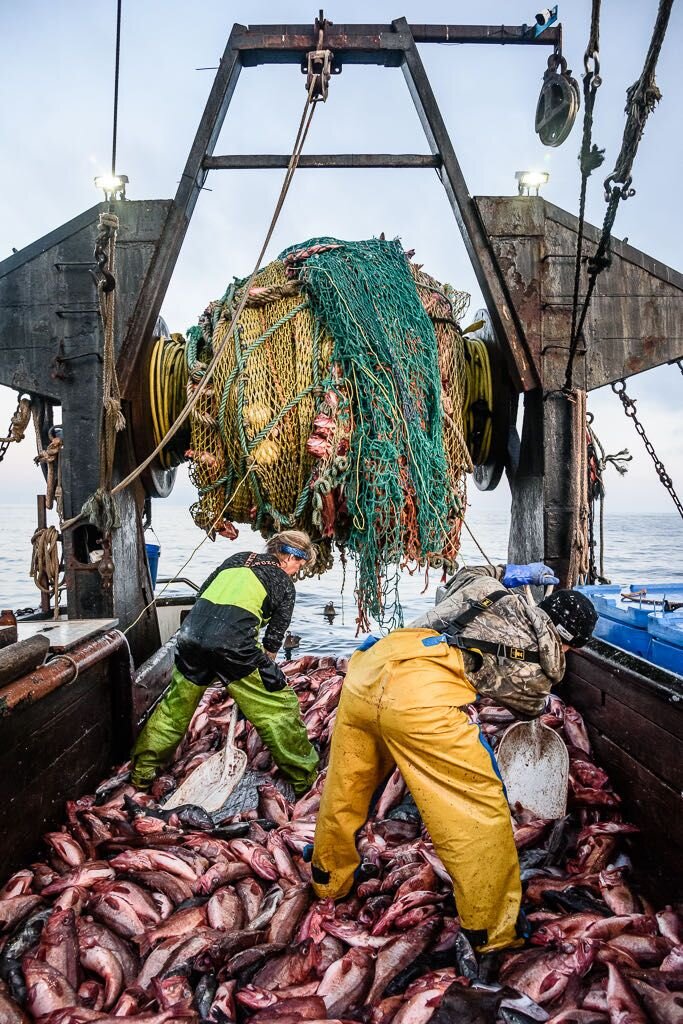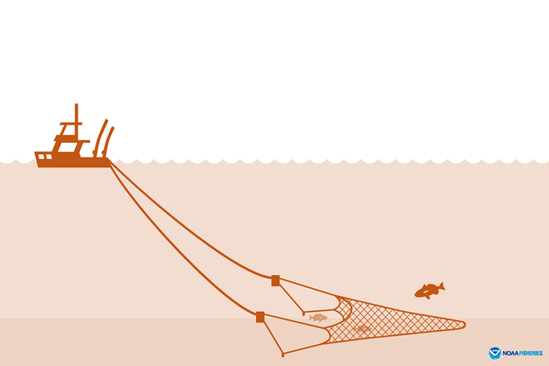Fishing Gear Types 101: Trawling
Deckhands clear the deck of groundfish recently pulled up in the trawl net. Photo by David Hills of @FishyPictures
Trawling
Groundfish (sablefish, rockfish, lingcod, flounders, and soles)
A trawl is a method of net fishing in which a funnel-shaped net (much like a windsock) is towed behind the boat to capture fish. There are bottom trawls, which primarily target groundfish that live on or near the seafloor, and mid-water trawls (also known as pelagic trawls) that target fish in the mid-and surface water column like Pacific Whiting.
The net is set off a drum on the stern of a fishing boat and connected to the vessel by two heavy-duty tow cables. Each cable connects to a trawl door, which together act as wings keeping the net open horizontally. A floatline and a footrope keep the mouth of the trawl net open vertically.
The mesh size of trawl nets must be more than 4.5 inches in most groundfish areas on the West Coast to allow smaller, non-target fish to escape alive if caught in the net. Target species include Pacific Dover sole, sanddabs, sablefish (aka black cod), California halibut, and a variety of rockfish.
Trawling for groundfish is one of the most closely managed fisheries in the United States, which carries many regulatory costs. Area closures, gear innovations, science-based quota systems, and other measures protect sensitive marine habitat, minimize bycatch, and ensure every pound of fish is accounted for.
Nearly two dozen trawl-caught species are considered “Best Choice” or “Good Alternative” by the Monterey Bay Aquarium Seafood Watch, and the fishery is also certified sustainable by the Marine Stewardship Council (MSC). Scientists, fisheries managers, and many advocates see carefully managed trawling as an environmentally friendly method of harvesting sustainable seafood.
Illustration courtesy of NOAA Fisheries.


